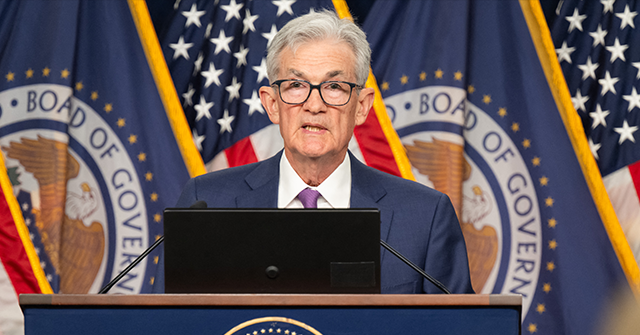American small businesses scored a major victory with this month’s passage of the Big Beautiful Bill, which locked in lower taxes and restored key tax breaks. However, the nation’s job creators are still operating with one hand tied behind their backs due to the ongoing high-interest rate environment.
The Federal Reserve is working at cross purposes with policymakers trying to unleash growth.
At its July meeting next week, the Fed has the opportunity to change course and align monetary policy with fiscal policy to support small business dynamism. It should move swiftly to meaningfully cut interest rates and begin restoring affordable access to credit for America’s small business backbone.
Rather than being data-dependent, Fed Chairman Jerome Powell has become a data denier. Since President Donald Trump took office, core inflation has come in at the Fed’s two percent inflation target on an annualized basis. Last week’s government data showed that wholesale prices, a leading indicator of what consumers will pay, remained unchanged in June.
Inflation is no longer the dominant threat to the economy. Instead, the bigger danger is a prolonged period of tight credit that quietly strangles entrepreneurship and expansion — especially for the nation’s 33 million small businesses.
Unlike large corporations that can tap into bond markets or draw on vast cash reserves, small businesses rely on community banks and traditional loans to fund their daily operations, purchase inventory, and invest in growth. But in this high-interest-rate environment, loans are hard to get and painfully expensive when available.
“I have been turned down by several small to mid-sized banks,” said Gerald Williams, a California hot-sauce entrepreneur, who was looking for a $50,000 loan to grow his business and buy a commercial kitchen. “The process of looking for a loan has been so frustrating that I have just given up on it,” said Shantell Chambliss, a Virginia small business owner who had been trying to get a $25,000 loan.
According to a Goldman Sachs survey from last year, 79 percent of small business owners said it was difficult to access credit, and 28 percent reported that the loans they were able to obtain came with predatory payment terms.
Many small businesses are now facing borrowing costs of nine percent, 10 percent, or even higher. Others are being shut out of credit markets altogether, forced to shelve expansion plans or delay hiring. This credit squeeze doesn’t make headlines like inflation, but its effects are just as corrosive — and much harder to reverse if left unchecked.
Some Fed officials understand the dynamic. Fed Governor Christopher Waller has called for an interest rate cut at next week’s meeting. It’s time the rest of the Fed officials recognize this dynamic.
The U.S. isn’t operating in a vacuum. Our benchmark interest rates are around two full percentage points higher than those of most advanced economies. The European Central Bank, Bank of Canada, and others have already begun cutting rates. Holding rates higher in the U.S. puts American entrepreneurs at a competitive disadvantage, raising the cost of doing business, weakening investment, and slowing the economy more than necessary.
Lower interest rates would amplify the positive effects of the BBB. With access to affordable capital restored, entrepreneurs could take full advantage of its pro-growth provisions, such as restored immediate expensing, building new facilities, expanding product lines, and reaching more customers. Tax cuts and low interest rates can usher in a new small business Golden Age.
A rate cut next week would give America’s small businesses the credit they deserve — and the credit they need.
Alfredo Ortiz is CEO of Job Creators Network, author of “The Real Race Revolutionaries,” and co-host of the Main Street Matters podcast.
Read the full article here


